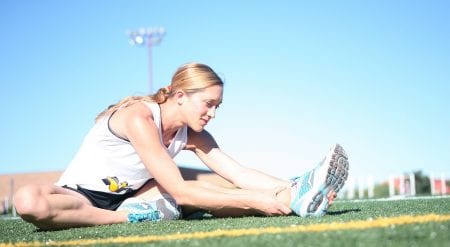
Image credit: skeeze
Everyone knows that if the level of physical training is small, even after not the most intensive training, expect muscle pain. It is painful to perform the simplest actions associated with this or that exercise, sometimes you do not even want to move. What if my muscles hurt after training? First of all, do not get upset. Soon the discomfort will pass, and with regular sports activities the body will be in a pleasant tone.
Causes of muscle pain after physical exertion
- trauma, in which case pain occurs immediately;
- formed lactic acid;
- microtraumatic fibers.
As a result of training, too much lactic acid accumulates in the muscles, so when they are cut, discomfort is felt.
If you dramatically change the set of exercises, directing the impact on certain muscle groups, increasing the intensity of training, performing more repetitions, raising significant weights, even trained muscles can begin to ache. In this case, the pain is caused not by lactic acid, but by microfractures of the muscle fibers.
Pain occurs the next day or every other day, after two or three days it disappears. With an increase in the level of fitness, the body improves the ability to remove slags that form in the muscles, and increases the strength of the fibers.
It turns out that the microtraumas of fibers stimulate the defenses of the body, which produces much more hormones, their action removes inflammation and accelerates healing. The division of protein cells also occurs faster, resulting in increased muscle mass.
How to prevent muscle pain after exercising
It is necessary to organize the training correctly, not allowing the muscles to ache. Efforts should be directed at minimizing uncomfortable phenomena.
Those who have long been engaged in physical culture or sports know that muscle pain after exercise is often associated with overtraining. The appearance of pain in the presence of sports experience indicates a lack of time for the body to restore the muscle fibers damaged during the previous occupation. In the case of overtraining, while in the muscles, the inflammation and the healing of the fibers are eliminated, they are given additional load, which causes new micro-trauma, etc.
Each training should end with a so-called hitch. These are different sports movements, similar to a warm-up, but performed for a different purpose. Useful walking, easy jogging, simple exercises for flexibility or stretching. These simple exercises accelerate the removal of the formed decomposition products from the muscles.

Image credit: scottwebb
How to train properly
Before exposing the body to physical exertion, it is necessary to exercise properly. To keep the muscles warmer, it’s better to dress warmly.
Each training should be carried out with a certain attitude. You need to clearly see the goal before you. Otherwise, physical education or sports become a set of mechanical efforts to lift weights or body weight, which give one fatigue.
To accelerate the withdrawal of disintegration products that cause painful sensations, it is necessary to drink a sufficient amount of pure water. Water is also required to compensate for the body’s moisture expenditure on perspiration, which increases during exercise.
What to do if your muscles ache after training
If the pain is quite severe, it is worth visiting a sauna.
Who does not like the bath heat or is contraindicated, can take a hot bath with sea salt. As a result of the healing procedure, metabolic processes are activated and the elimination of discomfort will occur much faster.
In order not to suffer muscular pain, you can ask at the pharmacy some kind of anesthetic anti-inflammatory plaster.
The principle of the action of patches of different manufacturers is similar. They have analgesic and anti-inflammatory effect, stimulate blood flow.
It is recommended to use the plaster for the night, pasting the muscles in the evening. Plasters effectively relieve muscle fatigue, pain, they can also be used for stretching, dislocations, bruises and frostbite.
